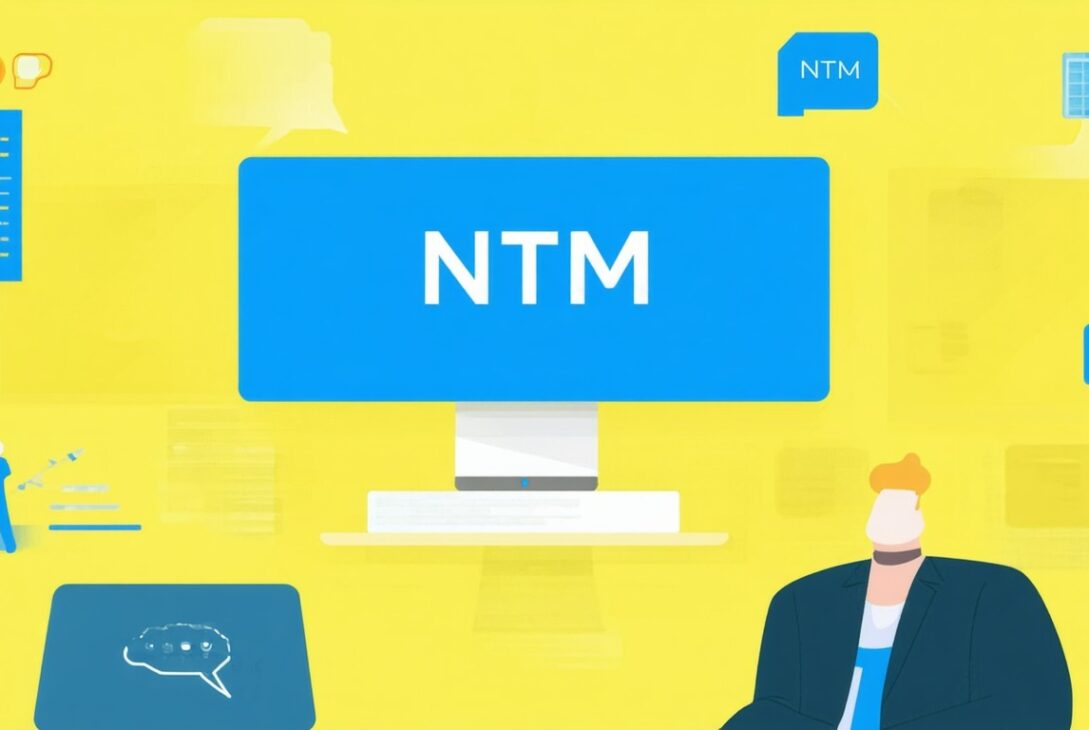You’ve likely stumbled across the abbreviation “NTM” in an email, text, medical context, or technical article and paused, unsure of its meaning. In a world saturated with jargon and acronyms, not knowing what “NTM” stands for can lead to confusion in both casual and professional settings. This article promises to clarify exactly what “NTM” means, explore its most common usages, and help you understand its significance in different contexts. By the end, you’ll be equipped not only with the definition but also with a working knowledge to interpret and use NTM confidently wherever you encounter it.
What “NTM” Means: Definition, Scope, and Relevance
NTM is a versatile acronym, but its primary meanings center around two key areas: informal communication (“Not Too Much”) and medical terminology (“Nontuberculous Mycobacteria”). The usage depends heavily on context.
Defining “NTM” Across Contexts
- Not Too Much
In informal conversations, especially online or in text messaging, “NTM” often stands for “not too much.” Typically, it appears in responses to casual questions like “What’s up?”—someone might reply, “NTM, just relaxing.” - Nontuberculous Mycobacteria (Medical)
In the medical and scientific fields, “NTM” denotes “nontuberculous mycobacteria.” These are a group of bacteria found in soil and water which, unlike the tuberculosis-causing mycobacteria, cause a different set of infections, predominantly in the lungs.
Why It Matters for Readers
Whether you are a layperson encountering “NTM” in a text, a student reading about infectious diseases, or a professional corresponding via email, the stakes are clear: misunderstanding “NTM” could lead to miscommunication or oversight of critical information. Being able to discern which definition is relevant allows you to respond appropriately and stay informed in any situation.
Distinguishing NTM: Not Too Much vs. Nontuberculous Mycobacteria
Understanding “NTM” requires not just memorizing definitions, but also recognizing cues that place the acronym in context. Here’s a strategic approach:
Spotting the Context
- Casual/Textual Usage:
If you see “NTM” in chats, social media, or friendly emails—especially as a response to “What’s up?” or similar—assume it means “not too much.” - Medical/Technical Usage:
In professional, academic, or scientific writing, especially within discussions about respiratory illnesses or lab reports, “NTM” nearly always refers to “nontuberculous mycobacteria.”
Step-by-Step Decision Criteria
- Assess Tone and Setting:
Is the conversation informal or professional? Colloquial NTM is reserved for the former. - Check for Medical or Scientific References:
Are lung infections, mycobacteria, or public health mentioned? This points to the medical definition. - Look for Additional Clues:
Contextual keywords like “chillin’,” “work,” or “relaxing” suggest “not too much.” Words like “culture,” “isolate,” or “infection” point to “nontuberculous mycobacteria.”
Tools and Checks
- Rely on reputable dictionaries or medical glossaries when in doubt.
- Observe the surrounding language—technical terminology usually demands the medical meaning.
- For professionals, internal communication guidelines may specify expected usage for clarity.
Data & Proof: Prevalence and Impact of “NTM”
Key Statistics
- Medical Growth:
In the United States, the incidence of NTM lung disease rose 8.2% annually between 2008 and 2015 (American Thoracic Society, 2018). - Communication Habits:
Shortened and abbreviated text responses, including terms like “NTM,” are favored by over 60% of millennials and Gen Z for digital conversations (Pew Research Center, 2022). - Clinical Relevance:
Nontuberculous mycobacteria now account for over 30% of all mycobacteria-related infections reported to US health authorities, highlighting their clinical impact (CDC, 2021).
What These Numbers Mean for You
These data points demonstrate that not only is “NTM” an important term in emerging medical literature, but it is also woven into the fabric of modern texting culture. For communicators, knowing “NTM” speeds up interactions and reflects current digital habits. In health contexts, understanding NTM’s role allows for better comprehension of medical risks and public health trends.
Practical Examples of “NTM” Usage
Example A: Casual Conversation
Setup:
A college student receives a late-night text: “Hey, what’s up?”
Action:
They reply, “NTM, just watching Netflix.”
Measurable Result:
The conversation flows smoothly, and the abbreviation is understood without confusion. This highlights effective communication using contemporary shorthand.
Example B: Medical Communication
Setup:
A pulmonologist discusses lab results with a patient: “Your cultures tested positive for NTM.”
Action:
The doctor explains, “This stands for nontuberculous mycobacteria, which are different from tuberculosis bacteria but may require treatment.”
Measurable Result:
The patient gains crucial information about their condition, helping them make informed decisions about care and therapy.
Common Mistakes & How to Avoid Them
- Assuming One Universal Meaning:
One of the largest pitfalls is presuming “NTM” only carries one definition. Erroneously applying the medical term in a casual setting or vice versa can confuse your audience. - Skipping Contextual Diligence:
Failing to analyze the surrounding conversation or text strips “NTM” of its true meaning. - Overusing Abbreviations:
In professional or cross-generational settings, abbreviations like “NTM” may not be universally recognized. Overuse can result in miscommunication, particularly with those unfamiliar with digital slang or technical vocabulary.
Implementation Checklist: Using and Understanding “NTM”
- Clarify the context (casual vs. medical/scientific) before using or interpreting “NTM.”
- When uncertain, ask for clarification or provide the full term alongside the abbreviation.
- Avoid using abbreviations in critical communications unless your audience is known to be familiar with them.
- Stay current on both medical terms and evolving text-based slang, as meanings and popularity can shift.
- Consult dictionaries, glossaries, or experts when encountering unfamiliar abbreviations in crucial settings.
Conclusion — Key Takeaways and Next Steps
Understanding what “NTM” means is more than a matter of vocabulary—it’s a skill in contextual cue reading, ensuring clarity whether you’re chatting with friends or reading a medical report. The term “NTM” can signal a laid-back conversation or point to a significant health condition, so your ability to read cues and ask for clarity when necessary is vital. Now equipped with a nuanced grasp of “NTM,” you are prepared to interpret and use the term accurately in any context. As you navigate communications ahead, remember: always anchor your understanding in context and never hesitate to seek clarity where needed.
FAQs
What does NTM mean in texting?
In texting, “NTM” usually stands for “not too much” and is commonly used as a brief reply to casual questions like “What’s up?” or “How are you?” Recognizing this usage helps simplify modern digital conversations.
Is NTM only a medical term?
No, “NTM” is not limited to medical settings; it also features in casual digital slang. The key is to evaluate the context—professional or technical discussions typically refer to “nontuberculous mycobacteria,” while informal chats use “not too much.”
How can I tell which meaning of NTM is intended?
Assess the tone, topic, and participants in the conversation. Medical terms, context about infection, or scientific language mean “nontuberculous mycobacteria”; in casual, everyday talk, it almost always means “not too much.”
Why is understanding NTM important in healthcare?
Accurate knowledge of “NTM” in the medical field ensures correct diagnosis and management of pulmonary diseases. With such infections increasing, as shown by the CDC and other research bodies, awareness is essential for patients and providers alike.
Should I use NTM in professional emails?
Use “NTM” in professional emails only if you’re certain the recipient will understand the term’s meaning in that context. When in doubt, write out the full term or explain its meaning to avoid confusion and maintain professional clarity.





